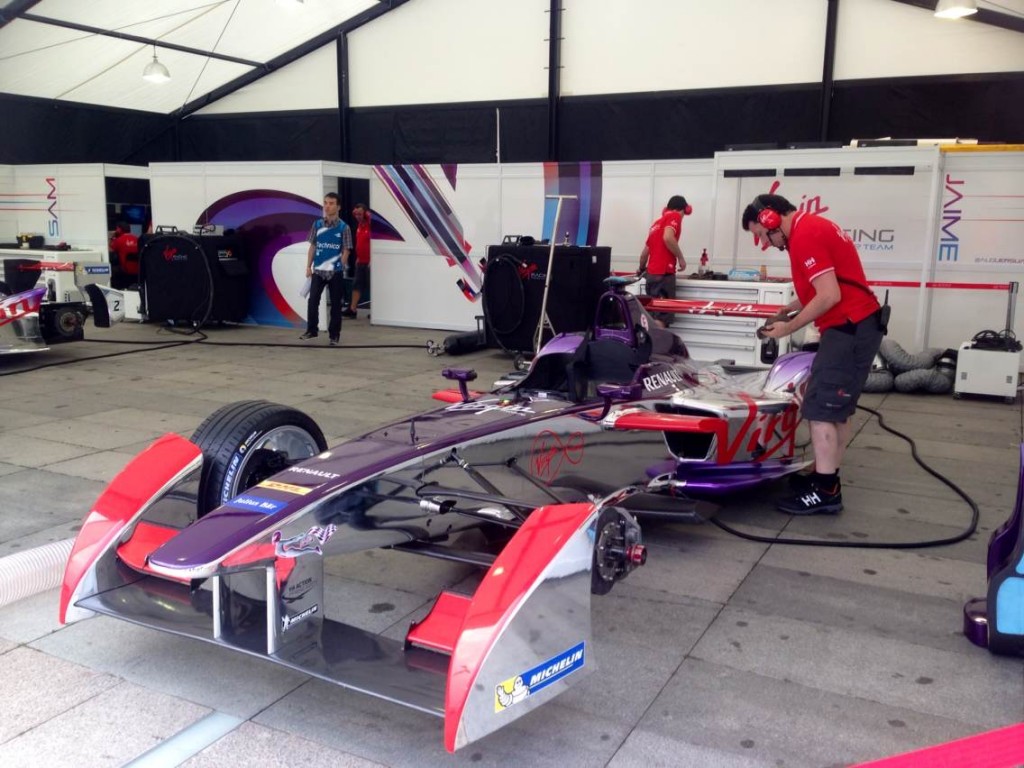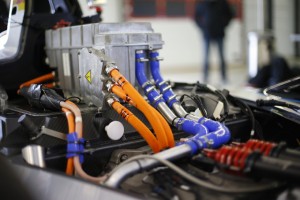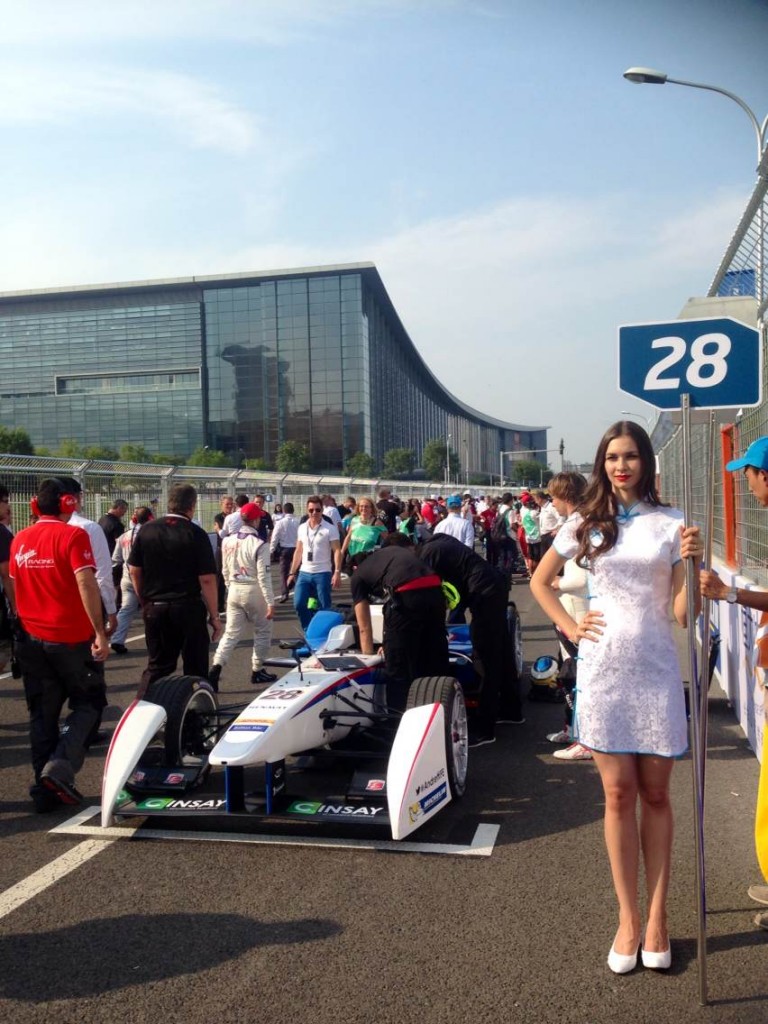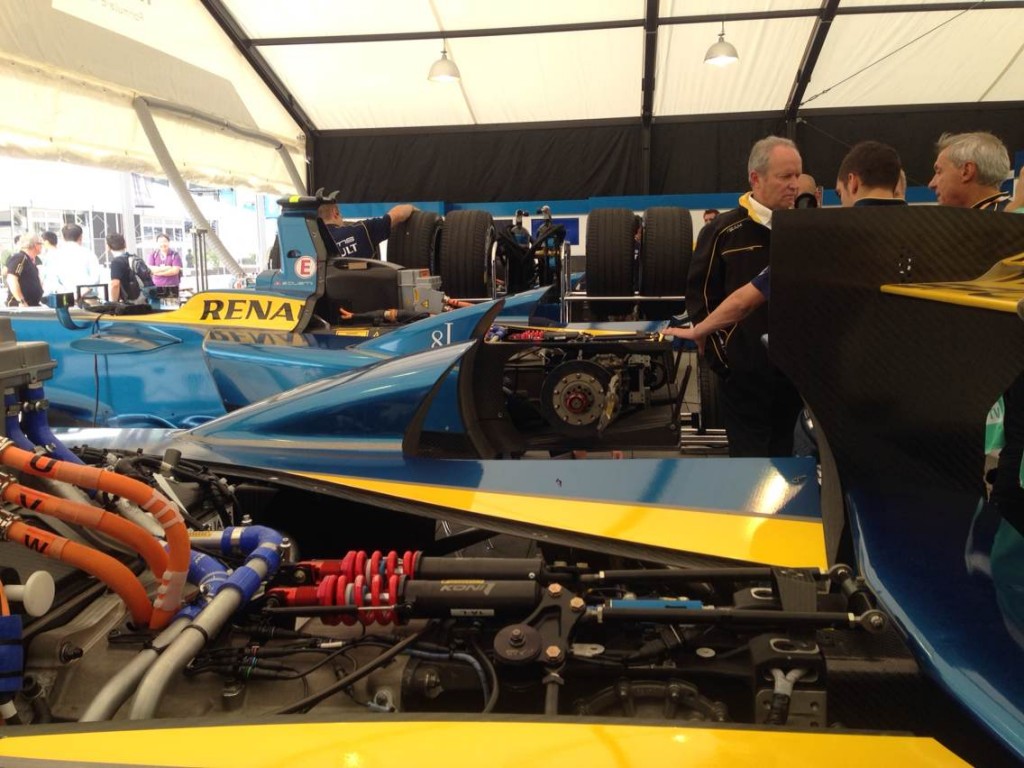
Mark Dreyer
Less than a year ago, several reports of electric cars bursting into flames sent Tesla’s shares plunging, so if nothing else, the debut of the all-electric global racing series Formula E in Beijing on September 13 proved definitively that electric cars can be safe: a massive crash on the final corner of the final lap saw driver Nick Heidfeld walk away unaided – and the car was free of flames.
The key to all electric cars, whether race cars or road cars, is the battery. In Formula E, that battery, together with its safety cell, weighs more than 300 kilograms – far more, for instance, than a Formula 1 engine – and the resulting weight distribution poses handling challenges for the drivers. But it’s capable of powering the car at speeds of up to 150 mph, even though its power fades as the race wears on, and current technology means that the battery can only last for 25 minutes. As a result, motorsports fans witnessed the novel sight of drivers changing cars during a pit stop, rather than tires, since the FIA, the sport’s governing body, ruled it would be too dangerous to swap a battery out mid-race.
Williams Advanced Engineering got the job to design the battery in part because of its experience of KERS (Kinetic Energy Recovery Systems) with F1, but it only joined the Formula E consortium less than a year before testing was due to start after the original OEM pulled out on seeing the detailed design brief.
While all cars currently use the same, identical lithium ion batteries, the plan is that, in subsequent seasons, each race team will partner with an OEM to produce their own battery. As Formula E CEO, Alejandro Agag, told the Bloomberg New Energy Finance Summit in New York earlier this year, “Competition, and especially with cars, is how technology has been developing in the past few years.” Agag has compared the current state of Formula E to the clunky suitcase-sized mobile phones of two decades ago, but his hope is that, as smart phones have done, new technology in the cars will also change our lives for the better.

The Williams Battery
Agag also wants a battery strong enough to power a car for the entire race, the next step on the long road towards reaching a tipping point where battery-powered cars can last longer, go faster, be cleaner and be cheaper than conventional fuel-powered cars. At that stage, he argues, why would you not want to buy an electric car?
Of the many obstacles dotted along that route, producing cleaner electricity stands out. The EV market has drawn criticism in the past for using coal-generated electricity to charge its batteries, largely negating any positive effects. But Formula E has tackled that issue head-on by engaging British-based renewable power company Aquafuel to supply a carbon-neutral glycerin generator to charge all 40 race cars at each event.
Backed by environmental investment firm EEA Fund Management and others, Aquafuel has partnered with British fuel company Greenergy to adapt technology that combusts glycerin in standard diesel generators. Another advantage is that glycerin can be farmed from salt-water algae in salt flats and coastal areas where no crops can be grown, a key advantage over biofuels that require arable land.
Another innovation showcased by Formula E is wireless charging. Using Qualcomm’s Halo resonant magnetic induction technology, cars can be fitted with a charging pad underneath and, once parked over a base pad, charging starts automatically. Formula E’s safety cars already use this technology, but, eventually, race cars will be able to charge on the go using hardware embedded in the track. Since the series races on inner-city street circuits, that technology could then be used by commercial vehicles for the other 364 days of the year.
Formula E’s debut race was an intriguing affair. While many were curious to see how the new vehicles would sound at full speed, the dance tracks played throughout to mask the lack of noise gave the feel of a music festival rather than a sporting event. In addition, with fans arriving early on race day to see the qualifying session, several had left well before the main event finished.

Mark Dreyer
It was no accident that Formula E chose to launch its series in Beijing, one of the most polluted cities in the world. Although the city has much to gain from electric car technology, EV adoption in the world’s largest car market has been abysmal. Despite the fact that electric cars are exempt from the license-plate lottery, through which prospective car owners must conquer nearly impossible odds in order to register their purchase, just 331 electric cars were sold in the capital in the first half of this year. For a city with 5.5 million cars, that is a drop in the ocean.
But it’s not all doom and gloom. Steven Lu, CEO of Team China Racing and a driving force behind the promotion of the Beijing event, pointed out that China’s State Grid – the largest state-owned electric utilities company in the world – is opening up the charging infrastructure to the public sector, and admitted support from the Beijing municipal government for the Formula E race had been strong. Significantly, the Chinese government announced a war on pollution during its annual congress in March. Now, like Formula E itself, they must convince the wider public that electric cars are the future – and not just a novelty.

Mark Dreyer